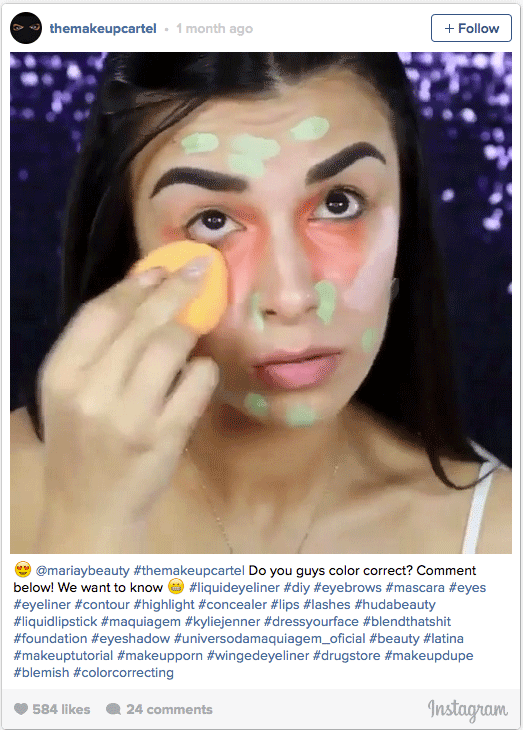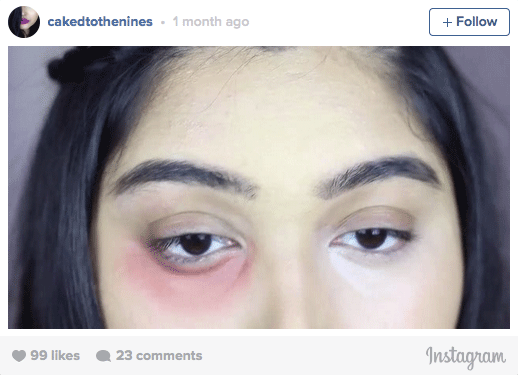What Is Color-Correcting Makeup—and Does It Actually Work?

The trend is taking over Instagram. (Photo: Getty Images)
If you’ve seen Instagram videos of women painting their faces shades of green, orange, and lavender all over the place lately, you’re not alone: Tons of drugstore and high-end makeup brands are coming out with color-correcting palettes featuring shades you’d typically never dream of putting on your face. So how exactly do these products work?

“Color correcting is playing with the color wheel—you apply the opposite color to neutralize another color,” says Fiona Stiles, creator of Fiona Stiles Beauty and a celebrity makeup artist whose clients include Elizabeth Banks and Jessica Alba. “For instance, if you have purple or blue discoloration under your eyes, then a peachy color will help counteract that.”
RELATED: 6 Concealer Hacks to Hide Any Flaw
Interested in trying the trend yourself? While pics of purple-painted faces blowing up on Instagram, less is usually more since shades like lavender, yellow, and green can often add an unnecessary layer of makeup to the face, says Stiles.
Stiles finds pink, peach, and orange shades to be the most useful. “Peaches and oranges are perfect for covering dark circles under the eyes,” says Stiles. “The paler you are, the more peachy the shade you’ll need. For darker skin tones, look for orange-y shades to brighten under the eyes, dark marks, and the center of the face.” Meanwhile, greens and yellows can be used to cancel out redness and hyperpigmentation—but you can get a similar effect from using traditional foundations and concealers.

As for application, it really depends on what you’re trying to correct and the size of the area. If you have melasma or hyperpigmentation, you’ll want to correct under and sometimes also over your foundation. If you’re concealing dark bags under your eyes, use a peach-based corrector before your foundation and concealer. Try Fiona Stiles Beauty Full Cover Perfect Finish Peach Corrector ($24, ulta.com) or Becca Backlight Targeted Colour Corrector ($30, sephora.com). “Brushes are best for covering smaller, specific areas, and sponges or fingers are good for larger areas,” says Stiles.
RELATED: How to Banish Puffiness, Dark Circles, and Fine Lines for Good
The bottom line: Color correcting can work wonders if you actually need it. If you have mild dark circles, hyperpigmentation, dullness, or acne that can be toned down with just foundation and concealer, then piling on the entire rainbow isn’t always necessary and can actually make your foundation look heavier. Ultimately, the key is finding the shade that matches your need and not going overboard with it.
More from Women’s Health:
Got No Time for Contouring? Try ‘Tontouring’ for Cheek-Bone Perfection
5 Foundation Mistakes You’re Probably Making
